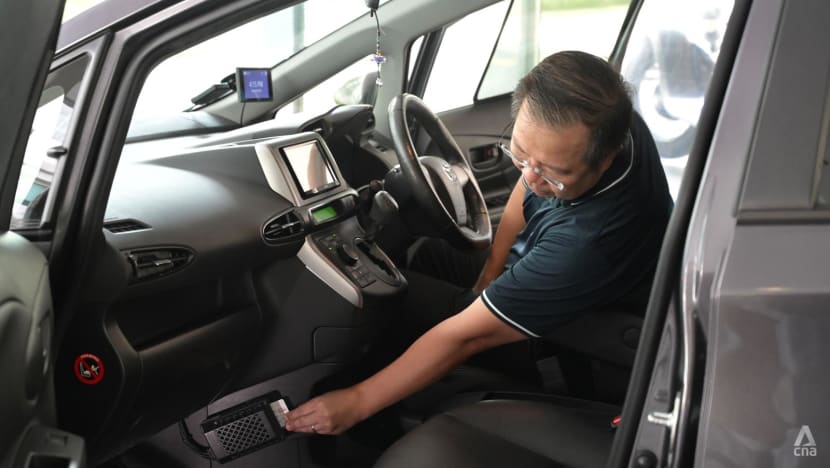Car owners can choose to install ERP 2.0 processing units at driver's footwell: LTA
LTA said NETS will provide a free NETS Motoring Card to all motorists who install the ERP 2.0 on-board unit.

LTA recommends installing the ERP 2.0 processing unit at either the driver’s or the front passenger’s footwell. (Photos: LTA)

This audio is generated by an AI tool.
SINGAPORE: Drivers installing their ERP 2.0 on-board units (OBU) are allowed to install the processing unit at the driver's footwell, although this is dependent on their car model, the Land Transport Authority (LTA) said on Thursday (May 2).
"Vehicle owners can choose where to install the processing unit. LTA’s recommendation is for the processing unit to be installed at either the driver’s or the front passenger’s footwell," the authority said.
"However, in some car models, these locations may not be feasible. In such cases, owners can also opt for other locations within the vehicle, subject to safety considerations and technical feasibility."
When the installation exercise started last year, the front passenger's footwell was recommended as the default position for the processing unit.
There has been feedback that the placement of the processing unit made it difficult for drivers to reach the units.
LTA also posted a video on its Facebook page earlier this week, explaining why the OBU for cars had to come in three pieces unlike motorcycles, which are fitted with a single-piece OBU similar to the in-vehicle unit (IU) under the old ERP system.
It added the temperature in the footwell area of an enclosed car is significantly lower than the temperature at the dashboard, and that is the reason why the OBU antenna has to be separated from the processing unit.
The processing unit holds the CEPAS card - such as NETS FlashPay card, NETS Motoring Card and EZ-Link Motoring Card – which is used to pay for ERP or parking charges.
LTA announced on Mar 28 that drivers would be given a choice as to where they can install the unit, without specifying where.
The authority made it clear on Thursday that the processing unit can be installed at the driver's footwell.
The authority has also asked all dealers and importers to consult buyers of new vehicles as to where they would like to install the processing unit, and if they want to install the touchscreen display.
"The touchscreen display can also be folded down if motorists prefer," said LTA.
For owners who choose not to install the touchscreen display, they will still receive it so that they have the option to install the display in the future.
On Apr 19, LTA rolled out a button on the touchscreen display so that motorists can deactivate their CEPAS card for parking payment, without removing it from the processing unit.
Previously, people who had complimentary parking tickets had to remove their cards before reaching the gantry.
"If the driver forgets to reactivate the card after leaving the car park, it will not affect his ERP payments as the correct amount will still be deducted from the card balance when the vehicle reaches an active ERP gantry," LTA said.
Another reason drivers may need to remove their CEPAS card is to tap in or out of some private car parks that do not have the Electronic Parking System.
While all public car parks and most private car parks have the system installed, some have yet to do so.
LTA said on Thursday that NETS will provide a free NETS Motoring Card to all motorists who install the OBU. NETS will announce more details in due course.

Installation of the ERP 2.0 OBU began in August 2023 with a group of early adopters. Since then, more than 18,000 vehicles have installed the OBU.
"We have received useful feedback from the early adopters and made several improvements to the OBU features and installation process to enhance user choice, convenience, and safety," said LTA on Thursday in announcing the changes.
It added that early adopters said they appreciate the safety notifications from the OBU on school zones, silver zones and bus lane hours.
The authority is working with the Traffic Police to expand safety notifications to include more speed camera zones, including red-light cameras and mobile cameras.
These additional features will be pushed out to motorists “over-the-air”, after the OBUs are installed without requiring motorists to bring their vehicles back to workshops for upgrades.
LTA said it will continue to gather feedback from motorists, workshops and dealers.














